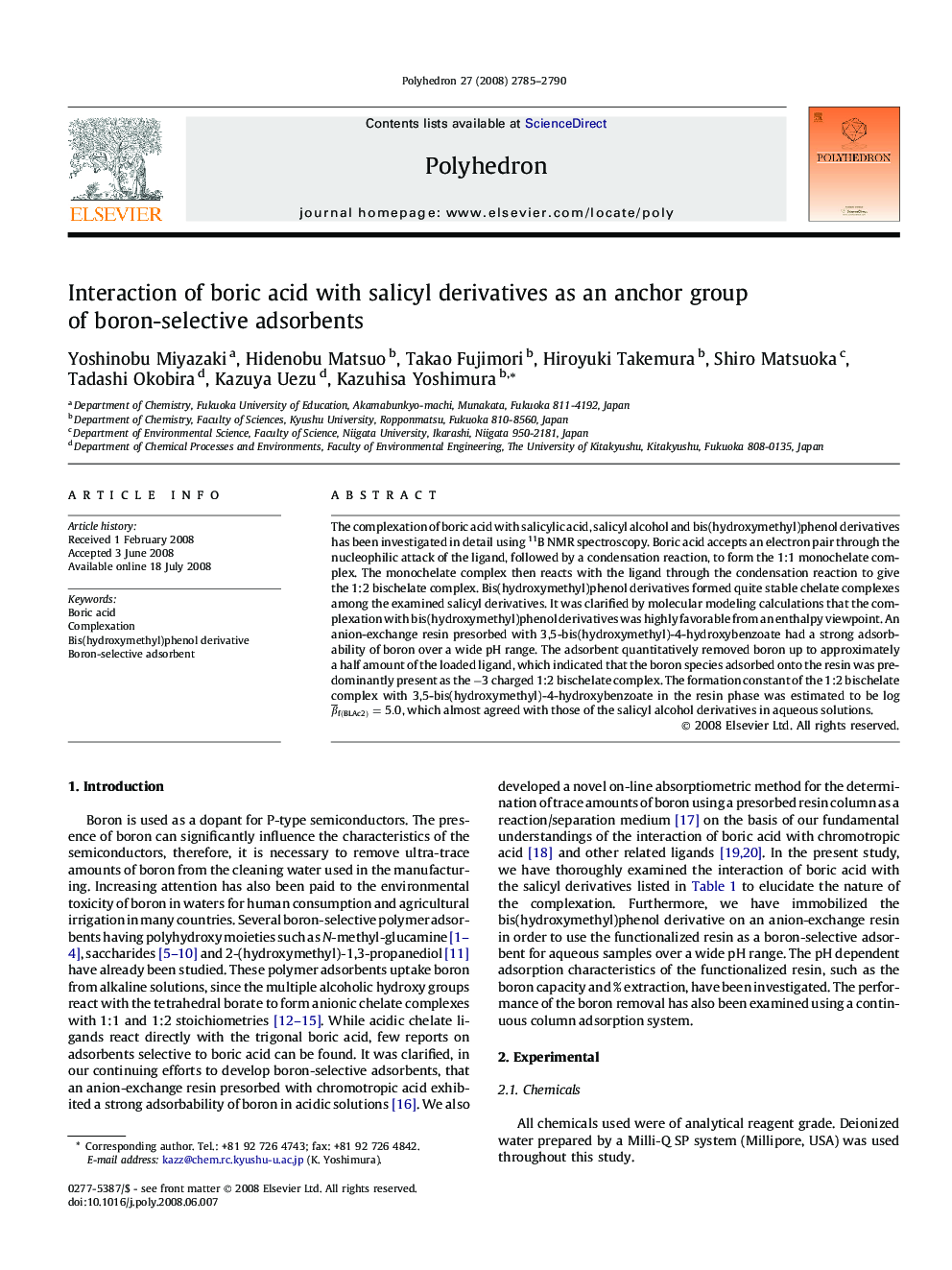| کد مقاله | کد نشریه | سال انتشار | مقاله انگلیسی | نسخه تمام متن |
|---|---|---|---|---|
| 1340340 | 979732 | 2008 | 6 صفحه PDF | دانلود رایگان |

The complexation of boric acid with salicylic acid, salicyl alcohol and bis(hydroxymethyl)phenol derivatives has been investigated in detail using 11B NMR spectroscopy. Boric acid accepts an electron pair through the nucleophilic attack of the ligand, followed by a condensation reaction, to form the 1:1 monochelate complex. The monochelate complex then reacts with the ligand through the condensation reaction to give the 1:2 bischelate complex. Bis(hydroxymethyl)phenol derivatives formed quite stable chelate complexes among the examined salicyl derivatives. It was clarified by molecular modeling calculations that the complexation with bis(hydroxymethyl)phenol derivatives was highly favorable from an enthalpy viewpoint. An anion-exchange resin presorbed with 3,5-bis(hydroxymethyl)-4-hydroxybenzoate had a strong adsorbability of boron over a wide pH range. The adsorbent quantitatively removed boron up to approximately a half amount of the loaded ligand, which indicated that the boron species adsorbed onto the resin was predominantly present as the −3 charged 1:2 bischelate complex. The formation constant of the 1:2 bischelate complex with 3,5-bis(hydroxymethyl)-4-hydroxybenzoate in the resin phase was estimated to be log β¯f(BLAc2)=5.0, which almost agreed with those of the salicyl alcohol derivatives in aqueous solutions.
The anion-exchange resin presorbed with 3,5-bis(hydroxymethyl)-4-hydroxybenzoate has a strong adsorbability of boron over a wide pH range. The boron species adsorbed onto the resin is predominantly present as the −3 charged 1:2 bischelate complex. The formation constant of the complex in the resin phase was estimated to be 105.0, which almost agreed with those of the salicyl alcohol derivatives in aqueous solutions.Figure optionsDownload as PowerPoint slide
Journal: Polyhedron - Volume 27, Issue 13, 10 September 2008, Pages 2785–2790